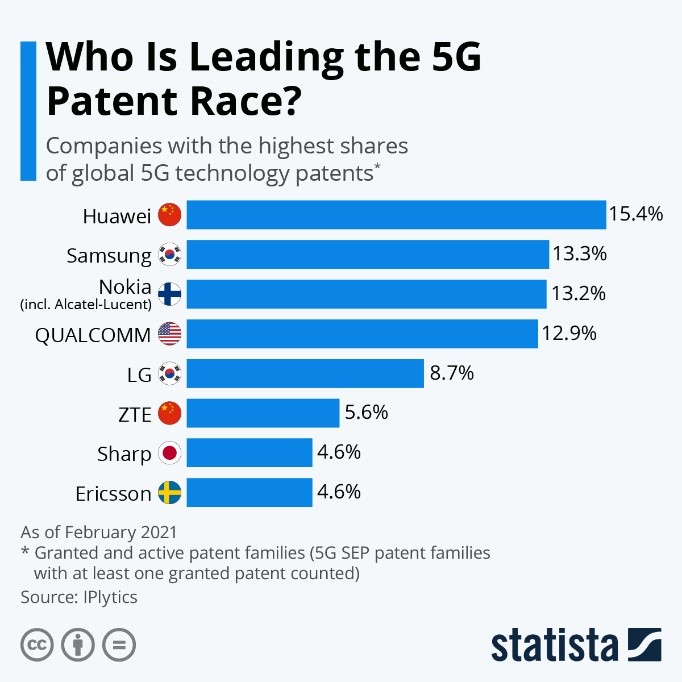An Innovator’s Guide to Standard Essential Patents – Part I: What is a standard-essential patent?
Mar 29th, 2021 by Dilworth IP | Recent News & Articles |
This article is the first of a three-part series titled “An Innovator’s Guide to Standard Essential Patents” in which we explore the fundamental concept and nature of Standard Essential Patents or SEPs. The second article will elaborate on how Standard Essential Patents are created and the third article will analyze the worth of SEPs in shaping modern-day innovations and product implementations.
In this article, we’ll dive into the fascinating world of SEPs, the unsung heroes of our interconnected world. We’ll explore what they are, how they’re created, and why they’re absolutely crucial for the tech we rely on every day.
What Is A Standard-Essential Patent?
A standard-essential patent claims an invention that must be used to comply with a technical standard; all elements of at least one valid claim must map to a coherent portion of the standard that is actually practiced.
Think of SEPs as the building blocks of interoperability. They’re patents that cover technology deemed crucial for a specific industry standard, like Wi-Fi, 5G, or MP3. These standards ensure that different devices and technologies from various companies can seamlessly communicate and work together.
More Details On Standard-Essential Patents
Technology is complex. Fields like semiconductors, telecommunications, and artificial intelligence have traditionally been reserved for well-funded R&D organizations at large corporations. But in today’s Internet-of-things era, small- and medium-sized enterprises in nearly every industry are discovering that creating smart products requires more than integrating Wi-Fi or AI into existing products. Creating smart products—like home appliances, wearable health monitors, or connected vehicles—requires an understanding of the technology landscape. Specifically, company leaders should be aware of what technology standards need to be adopted and what intellectual property must be licensed. At the heart of these issues are standard-essential patents.
A standard-essential patent (SEP) is a patent that claims an invention that must be used to comply with a technical standard. While that may sound like a simple definition, there is a lot to unpack. First, there is a dichotomy between patents and standards. A patent allows an inventor to lawfully exclude others from practicing an invention, while a standard is an agreed-upon set of guidelines for everyone to follow when implementing a technology. In other words, patents are exclusive while standards are inclusive. Thus, when developing a high-tech product, company leaders must balance the scope and adoption rate of each relevant standard with the cost of licensing all patents essential to implementing each standard. Further, the company may create its own inventions that could be monetized as SEPs. Integrating SEPs within the product lifecycle requires input and collaboration of engineering, business, and legal experts.
 Source: https://cdn.statcdn.com/Infographic/images/normal/20095.jpe
Source: https://cdn.statcdn.com/Infographic/images/normal/20095.jpe
For any given technology, there can be dozens of standards to choose from and hundreds—even thousands—of standard-essential patents to license. For example, the 5G standard for cellular telecommunications encompasses around 25,000 SEPs owned by hundreds of patent holders. When developing a 5G-connected products, company leaders can be blindsided by lengthy negotiations and cumulative royalty rates that erode profit margins. Fortunately, most SEP holders offer a single license for a given SEP portfolio instead of offering licenses on a per-SEP basis. Further, all SEP holders are obligated to offer “FRAND” licenses of SEPs, which are Fair, Reasonable, And Non-Discriminatory. Company leaders should obtain sound legal counsel on FRAND licensing, to address issues including how FRAND terms may be affected by the size of an SEP portfolio, the portfolio’s geographical reach, the age of patents in the portfolio.
Although it may be practical for a company to take FRAND licenses from the most well-known SEP holders for a particular standard, it is possible for the company to learn of some SEPs after the fact, for example, years after a product launch. In this case, company leaders have several options, such as negotiating a license or disputing the SEPs. The SEPs may be disputed by determining that they are not actually “essential.” In other words, while a patent may have been declared to the standard-setting organization as essential, the patent may only claim an optional part of the standard, or the relevant claim might map only to scattered and disjointed parts of the standard. To be clear, a true SEP requires that all elements of at least one valid claim must map to a coherent portion of a standard that is actually practiced. Determining essentiality is a highly specialized task best performed by a skilled patent attorney with deep subject-matter expertise in the relevant technology.
In summary, companies developing smart products are practically guaranteed to encounter standard-essential patents—either before or after product launch. With the right guidance, company leaders can advantageously integrate SEPs into the product lifecycle. The next parts in in this series will explore how SEPs are created and how to value them.
Subscribe to our Newsletter
Image Credits: Photo by ThisisEngineering RAEng on Unsplash
This article is for informational purposes, is not intended to constitute legal advice, and may be considered advertising under applicable state laws. The opinions expressed in this article are those of the author only and are not necessarily shared by Dilworth IP, its other attorneys, agents, or staff, or its clients.


